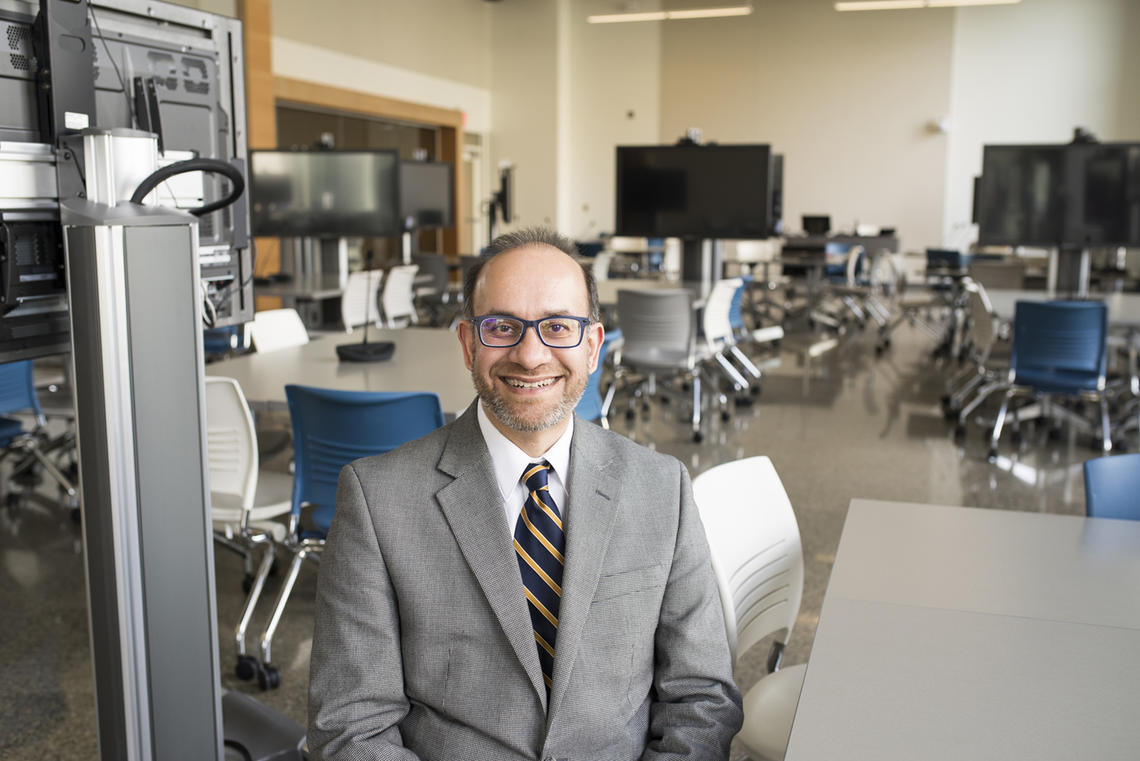April 19, 2016
'Anyone who walks into these spaces wants to teach in them'

Leighton Wilks noticed a palpable difference when his class moved from a traditional lecture-style classroom to an active learning space. Not only did attendance increase, but students were more engaged and collaborative.
“I see a lot more team cohesion. They’re talking more to each other because they’re sitting with their teams. It’s nice to foster that teamwork throughout the semester.”
Wilks is an instructor in the Haskayne School of Business and teaches a second-year organizational behaviour course in the newly-renovated active learning classroom in Scurfield Hall. He found that the space breaks down the boundary between instructor and student.
“Instead of being up at the front, I’m walking around. I feel I get a lot more questions and get to know the students better, which is important.”

Wilks found that an active learning space breaks down barriers between instructor and student.
Joni Miltenburg, University of Calgary
Taylor Institute’s flexible learning spaces support experimentation
The newly opened Taylor Institute for Teaching and Learning has several flexible learning spaces that are available to University of Calgary instructors to try different teaching and learning approaches. Instructors can submit a brief application outlining how they plan to use the space and how student learning will be enhanced. Applications to teach in the Taylor Institute in fall 2016 are due May 31.
Natasha Kenny, director of the Taylor Institute’s Educational Development Unit, says the spaces will allow instructors to reimagine what a classroom can look like and how student learning can happen.
“Anyone who walks into these spaces wants to teach in them, because it challenges their notions of how they teach. There’s a sense of unknown, where we don’t quite know the potential of these spaces. They challenge us to think differently about where and how learning occurs.”
The learning spaces are fully flexible; the tables, chairs, screens, whiteboards and instructors’ stations are mobile and can be arranged in any configuration. Technology is seamlessly woven into the spaces to enrich learning.
Kenny notes that the spaces are also beautiful, with large windows and lots of natural light, something that is important to student well-being.
“It will be fun to learn in these spaces. This building will come to life with the spirit of inquiry and energy of learning.”

Sharaz Khan, business instructor, says a flexible space puts the focus on student learning.
Joni Miltenburg, University of Calgary
Spaces allow instructors to research how students learn best
Instructors who teach in the building’s learning spaces are asked to evaluate — formally or informally — the impact on student learning, and share what they learn with the University of Calgary community. The discoveries made in the Taylor Institute will influence the design of other learning spaces on campus.
For Sharaz Khan, teaching in a flexible space helps to focus students and reduces distractions. Khan teaches business technology management to second- and third-year students in an active learning classroom.
“The resources are there, the environment is there, all the tools you need are there, so the focus is on the learning and not the physical space,” he says. “It not only provides an environment that is learner focused, but it simulates the business world. It mimics how employees interact with one another in groups in a very collaborative manner.”
Khan acknowledges that teaching in a flexible space requires instructors to rethink their courses and how they teach, but says the effort is worth it.
“I had three students who switched from another discipline into business technology management because they thought that was the future of business and technology. And they prefaced their comments by saying this room had a positive impact on their learning. What more could I ask for?
